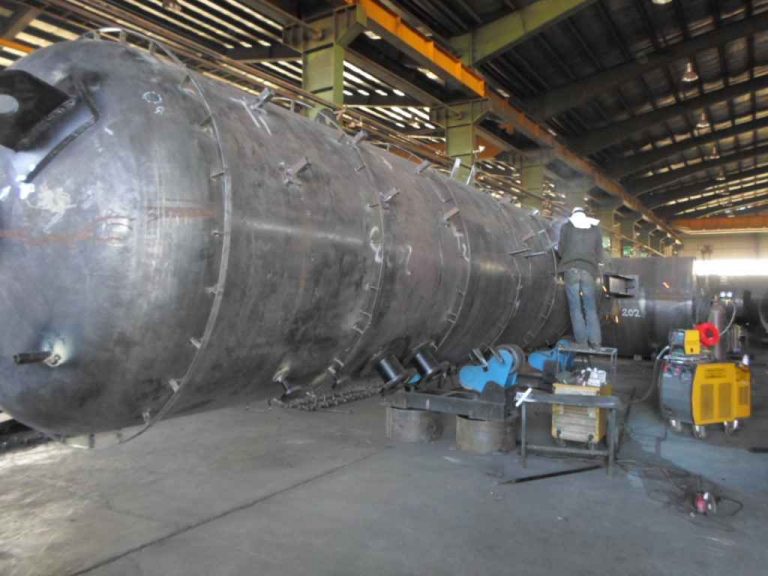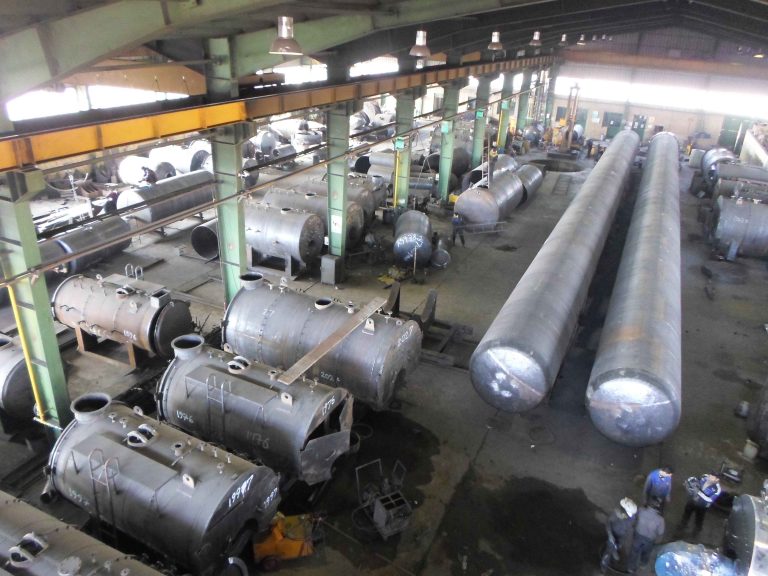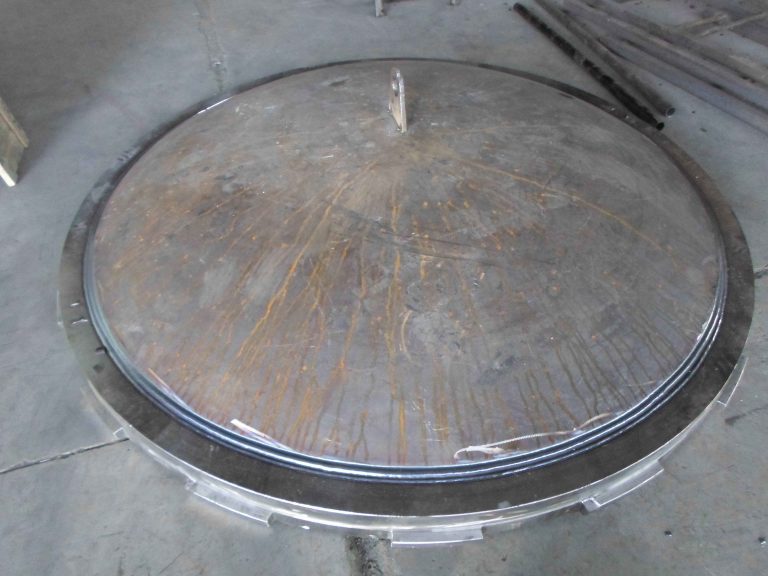Autoclave
AUTOCLAVE
General profile of autoclaved aerated concrete (AAC):
1) Designing and construction based on standard BS5500 (standard construction of pressure vessels).
2) Use resistant alloy steel of 17mn4 (DIN 17155) or A516 Gr70 in the body and doors.
3) Welding by automatic submerged machine using electrodes 7018, 6010 pre-heated.
4) Doing radiographic and ultrasonic testing from welds all longitudinal and circumferential welds body (100 percent) third and approved by Iran Standard & Quality Inspection and report to the employer.
5) Building under the supervision of inspectors of quality and standard of inspection of Iran and granting inspection certificate and booklet of building and monitoring as certified by standard inspectors.

6) Doing hydrostatic test to 1.5 times design pressure by device installed in place for an hour and offering a corresponding certificate to the employer.
7) Sealing the lid by steam pressure.
8) Doors made of lens Ellipsoidal 2: 1 of 17mn4 (DIN17155).
9) With a base of Saddle made of Mild Steel autoclave capable of longitudinal movement and expansion in time.
10) Water Separator System for separation of sediments and deposits of condensate return.
11) With the loose pieces under pressure in an autoclave or steam inlet to inlet pipe to prevent shifting.
12) Separator system in the autoclave steam.
13) Compressed rock wool insulation reinforced with a protective sheet of aluminum with a thickness of 50 mm and used as two layers (total 100 mm insulation).
14) With a body cover made of anodized color sheet with thickness of 0.75 mm with mobility at belts connection at the time of linear expansion autoclave.

15) Standard safety valve of the Twin PN40 or Class 300.
16) With steam stop valve of the type PN40 or Class 300.
17) With inlet and outlet valves of flanged type PN40 or Class 300.
18) With a temperature and pressure gauges installed on the main body of the Class 300 and input collectors.
19) With a line pressure along the Manu meters of Class 300
20) Installation and running at the project site.
21) Offering 3-year warranty on all parts and accessories.
22) Providing optimal map of layout and seating autoclave and boiler with a complete map of the foundation.
23) Offering prospectus related to the construction of standard inspection certificate, certified raw material, welds Radiographic testing certificate, certificate of welds Ultrasonic testing, hydrostatic testing device, certified welders, construction azbilt maps with all relevant details.

The quality of thickness in autoclaves style blocks (AAC) in accordance with standard BS 5500, BS 2790:
Designing Pressure: 16 bar 1.6 MPa
Designing temperature: 250 ° C
Diameter: 1750 mm
Length: 750 mm
Corrosion: 0.75 mm
Material and Methods:
The feature of this metal that has higher amount of manganese for high resistance and high silica to deal with corrosion, and as it is processed by annealing operation, it has flexibility in bending. The amount of carbon in the steel is controlled and is not more than 0.25%.
The following table shows two types of iron in the German standard:
In standard ASME (US)

Tension:
In calculations and formulas of Pressure Vessels, we have four types of stress:
1) Rupture stress (σu) the amount of force that enters the cross section of a metal and metal is torn apart (At room temperature)
2) Yield tension (σyy): this is a tension in which metal begins to stretch, but as soon as we get the force back, the spring returns to its first place.
(In designing reservoir, tension is the yield stress)
3) The yield strength at design (E t)
The temperature of the environment in which it is located shown with Ett
The design stress:
The design stress of Et / 1.5 or less was any stress σy /2.4 renowned designers and show ff.
Autoclave design
Selective steel is 17Mn4 (DIN17155)
17Mn4 steel design stress at 250 degrees is acceptable and the most economical.
f = σy /2.4 = 360 / 2.4 = 150 Mpa
f = Et / 1.5 = 220.1.5 = 146.7 Mpa
In designing, stress (f) is considered equal to 146.77.
Welding efficiency:
According to ASME, if 100% of the weld radiographs, Welding efficiency is S = 1.
If 10% of the welds is radiography, S = 0.85
If not Radiography, S = 0.65
In these tanks (autoclave), of transverse and longitudinal welds 10% and 100%, T-Joint will to radiography. Therefore, our welding efficiency with sufficient safety factor will be equal to S = 0.85.
Calculation of thickness:
Experience for a designer in Iran shows that the most economical and most reliable design is using European steel sheets and calculations based on ASME design of the US.
The formula for calculating the thickness of the ASME ia equal to:
Thickness in mm
T=[ PR/ (S.f – 0.6 P)] + C
Pressure MPa
t [ mm ] = ?
Autoclave radius mm
P[ Mpa] =1.6
The design stress MPa
R[mm] = 1750/ = 875
Boiling welding efficiency
f[Mpa] = 146.7
Thickness in mm
S=0.85
1.6 × 875
T = ——— + 0.75 = 12.065 → Thk = 14mm
146.7 × 0.85 – 0.6 × 1.6
The body thickness of 14mm is considered.
Insulation:
According to calculations, insulation with thickness of 100 mm made of rock wool and an air layer with a thickness of 10 mm inside the hall is about 7% drop, in the open air without wind is 11%, and if it is with wind, we will have 15% drop in the system.
